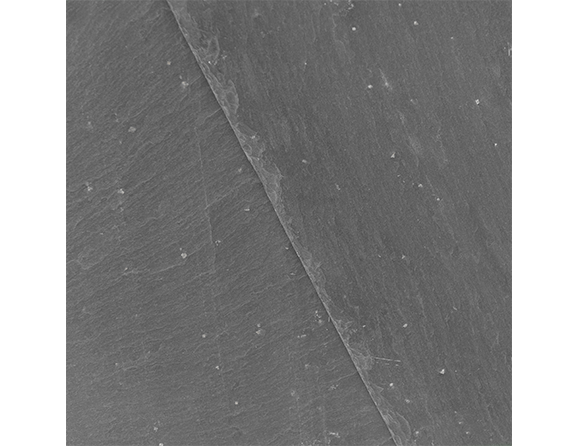Created by all the natural forces, slate contains different minerals of the land, including quartz, mica, calcium and iron pyrites.
What is pyrite (iron pyrite, mineral pyrite) ?
Natural slate’s composition is determined by the geology of the quarry therefore, it can have a widely varying chemical and mineral composition.
The mineral pyrite (or iron pyrite) is the most abundant sulphide mineral.
Pyrite’s metallic lustre and pale brass-yellow hue give it a superficial resemblance to gold, hence the well-known nickname of fool’s gold.
However, even though some similarities can create confusion to untrained eyes, there is no actual gold presence in natural slate. Upon closer inspection, gold typically appears much brighter and softer compared to pyrite.

There are different metallic minerals mixed and disseminated in the slate rocks and the pyrite is one of the most common. Nevertheless, is important to differentiate between the two types:
Stable
The presence of this mineral in the slate roofs do not have any technical inconveniences and the crystals do not expand. It is stainless and it does not affect the performance of the slate.
The slate pyrite can be recognised for its metallic shine and it’s presented disseminated or in concretions, usually in a cube shape.
Unstable
It is harder to spot, as it is smaller, browner, and more disseminated in the slate. The chemical composition is the same, but this kind of pyrite usually associates with other sulphides like quartz and calcite.
Under urban environmental conditions, these minerals might rust, creating red stains that can affect the aesthetics of the cover.
To avoid the presence of unstable pyrites, it is strongly recommended to use certified T1 slates. That means no changes in appearance or surface oxidation of metallic minerals. Colour changes that neither affect the structure nor form runs of discoloration.
Al CUPA PIZARRAS slates are certified as T1 (the maximum quality) in accordance with the European standard BS EN 12326-1, which assesses the level of oxidation within the slates through Thermal Cycles.
